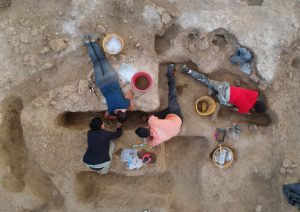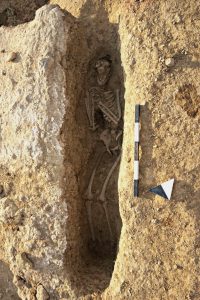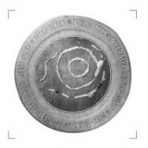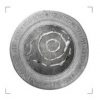During the third excavation campaign at Vetricella, between September and October 2018, a targeted anthropological investigation was carried out under the supervision of anthropologists in order to understand the real extension of the cemetery area and expand the currently analysed anthropological sample (Fig.1).

Twenty-one burials were found, eight of which refer to adult individuals and thirteen to sub-adults. As already observed in the study of burials found in previous campaigns, the number of sub-adults is significantly higher than that of adults.
The only differences noted in the documented graves, always earthen pits, is the presence of headstones whose identification is crucial from a taphonomic point of view as they can often be related to the type of decomposition (in full or empty space) that took place, revealing the ritual used for the burial (Fig.2).

The highest density of graves is recorded in the central portion of the excavation sector, where differences are observed in the depth of the excavated tombs, therefore presumably also in the original floor levels in which they were dug. In particular, the differences in quota of the burials in the ditch fillings could also depend on the progressive filling of the ditch itself, where graves were dug contextually to its gradual filling.
Most likely the funeral deposit has not been fully excavated, seeing that many areas of the excavation sector are curently at higher quotas than the deepest tombs discovered so far.
The skeletons discovered in this last excavation campaign, currently under restoration, will increase the anthropological sample, from which it will be possible to perform more reliable statistical analysis and possibly confirm some pathological and demographic hypotheses.


